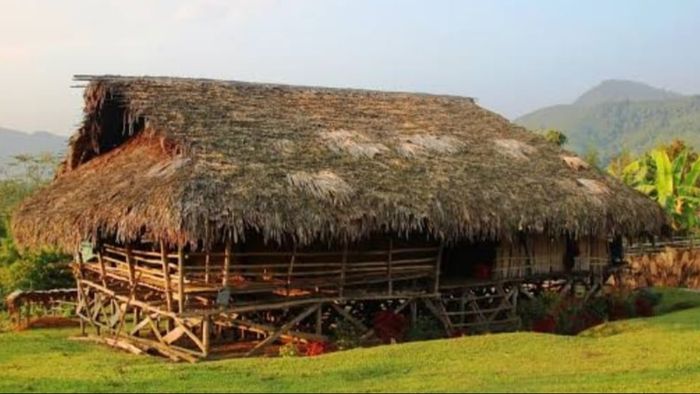Arunachal's traditional houses on the brink of extinction: A struggle between tradition and modernity
Traditional houses made of bamboo, and grass practised by Galos, Nyishi, Adi, and Apatani communities are on the verge of extinction in Arunachal.

- Feb 15, 2024,
- Updated Feb 15, 2024, 9:10 PM IST
In Arunachal Pradesh, a struggle is brewing between tradition and modernity.
Traditional houses made of bamboo, and grass practiced by Galos, Nyishi, Adi, Apatani communities are on the verge of extinction as a new generation believes that an individual’s worth is no longer measured by the size of the homestead.
The traditional Galo house is a massive structure built with locally available materials like wood, bamboo, cane, and palm leaves as thatching material. It is rectangular in plan and stands on stilts of wooden and bamboo poles, the height of which depends on the gradient of an undulating terrain of the land. ‘The Galo’ which is one of the tribe of Arunachal.
It is rectangular in plan and stands on stilts of wooden and bamboo poles, the height of which depends on the gradient of an undulating terrain of the land. ‘The Galo’ which is one of the largest tribes, largely concentrated in the West & Lower Siang, Leparada district of Arunachal Pradesh. The tribe is among the descendants of the great ancestor of the Tani tribe - the Abotani.
Galo villages are often situated near the river, and the site with considerable height on the spur of hills is generally chosen for habitation. They prefer the area where there is easy access to water and suitable land for cultivation. The traditional Galo house is a massive structure built with locally available materials like wood, bamboo, cane, and palm leaves as thatching material. The floor or plain surface is obtained after the arrangement of several rows of bamboo beams resting one upon the other. The pillars below the plain floor consist of wooden reinforcements that provide a unique appearance to this vernacular architecture.
The required quantity of tree, bamboo, and thatching leaves is adequately collected from the jungle and seasoned for its longevity. They adopt traditional methods of felling construction materials based on their age-old practices of reading the lunar cycle & leaves are cut on full moon night to avoid being infected with pests.
According to the residents of Leparada district the traditional homestead is no more – as brick and mortar continue to take over the homes as these are more safe and secure from fire mishaps.
Biba Gadi a resident of Leparada district speaking to India Today briefed about the significance of these traditional houses. "Our officers and elite learned seniors are advising to construct traditional houses along with the same compound if we opt for constructing modern concrete homes as it's our identity and matter of pride. In the past, these were a sign of status, but not anymore. It’s like everyone wants to live in modern tiles concrete homes– even the old ones. They would rather go without food but sleep in a decent house.”
Also Read: Election stunt or long-awaited relief? Arunachal MLA flags off controversial road project
The unpredictable weather pattern has a negative impact on the destruction of these houses.
To put up a simple grass-thatched house, one would need a lot of grass for roofing, sisal poles, sisal leaves, tree poles, sticks and clay soil, and bamboo. Also, that the skilled old men who had mastered the art of thatching have long gone to be with their ancestors. Most young men today have no interest in learning thatching. Many say that the educated youths are no longer interested in the traditional bamboo-grass houses.
Although the grass-thatched bamboo houses are slowly becoming ‘extinct’, some residents still make them even staying in the cities of Arunachal.
The grass bamboo Galo houses were cooler compared to these modern houses which get heated a lot.
The general feeling among the new generation is that the rise of brick-and-mortar cement houses in the areas signals growth and development in the region causing the slow extinction of these traditional homes.
Leparada Mla Gokar Basar speaking to India Today said that these traditional houses must be preserved and protected as these are our identity. "These houses act as air conditioning in summer and the feeling of oneness when family members sit together across the wood fire in these homes and eat food together is beyond imagination. Though we make RCC concrete buildings we should pave the way for constructing such houses together creating space for them also"